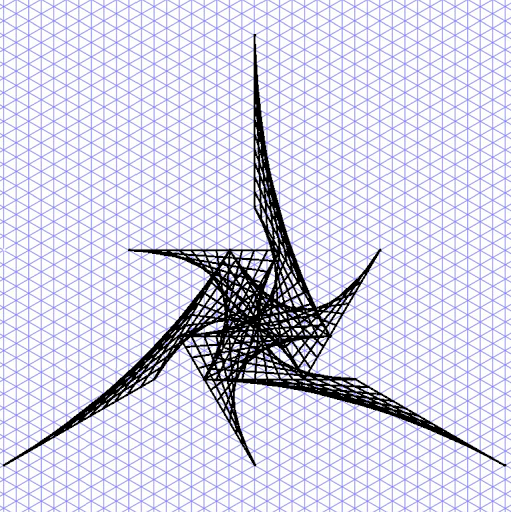Mark Andrew Hopper
age ~82
from Austin, TX
- Also known as:
-
- Mark A Hopper
- Mark Anthony Hopper
- Mark Alice Hopper
- Andrew Mark Hopper
- Mark A Hoffer
- Jeannie Hopper
- Phone and address:
-
1107 W 10Th St, Austin, TX 78703
5123449796
Mark Hopper Phones & Addresses
- 1107 W 10Th St, Austin, TX 78703 • 5123449796
- Saline, MI
- Solana Beach, CA
- Colorado Springs, CO
- Gadsden, TN
- Baytown, TX
- Indian Springs, AL
- San Francisco, CA
- Chicago, IL
- Galveston, TX
- Travis, TX
- Jefferson, TX
Work
-
Company:Desert display servicesAug 2003
-
Position:Install
Education
-
School / High School:Alhambra High School1989
Ranks
-
Licence:Michigan - Active And In Good Standing
-
Date:1978
Specialities
Business Litigation • Commercial Litigation • Arbitration • Contracts • Business Torts • Noncompetition and Non-Solicitation Agreements • Trade Secrets • Business Dissolution • Real Estate Litigation • ERISA Litigation
Lawyers & Attorneys

Mark A. Hopper, Ann Arbor MI - Lawyer
view sourceAddress:
DeLoof Hopper Dever & Wright PLLC
301 N Main St Ste 250, Ann Arbor, MI 48104
7342744577 (Office), 7349940206 (Fax)
301 N Main St Ste 250, Ann Arbor, MI 48104
7342744577 (Office), 7349940206 (Fax)
Licenses:
Michigan - Active And In Good Standing 1978
Education:
Thomas M. Cooley Law School
Degree - JD
Degree - JD
Specialties:
Litigation - 50%
Unknown - 50%
Unknown - 50%

Mark A. Hopper, Ann Arbor MI - Lawyer
view sourceOffice:
DeLoof, Hopper, Dever & Wright, PLLC
301 N. Main Street, Suite 250, Ann Arbor, MI 48104
301 N. Main Street, Suite 250, Ann Arbor, MI 48104
Phone:
7342744577 (Phone)
Specialties:
Business Litigation
Commercial Litigation
Arbitration
Contracts
Business Torts
Noncompetition and Non-Solicitation Agreements
Trade Secrets
Business Dissolution
Real Estate Litigation
ERISA Litigation
Commercial Litigation
Arbitration
Contracts
Business Torts
Noncompetition and Non-Solicitation Agreements
Trade Secrets
Business Dissolution
Real Estate Litigation
ERISA Litigation
ISLN:
906380435
Admitted:
1978, Michigan
U.S. District Court, Eastern District of Michigan
U.S. Court of Appeals, Sixth Circuit
1985, U.S. Supreme Court
U.S. District Court, Eastern District of Michigan
U.S. Court of Appeals, Sixth Circuit
1985, U.S. Supreme Court
University:
Michigan State University, B.A., 1974
Law School:
Thomas M. Cooley Law School, J.D., 1977
Links:
Site
Resumes

Mark Hopper Chandler, AZ
view sourceWork:
Desert Display Services
Aug 2003 to 2000
Install American Traffic Solutions
Tempe, AZ
Oct 2009 to Feb 2014
West Region Field Service Technician Renaissance Management Services
1992 to 2008
City Manager Fishel Corporation
Phoenix, AZ
1998 to 1999
Cable Splicer CDI Corporation
Phoe
1997 to 1998
Sales, Customer Service
Aug 2003 to 2000
Install American Traffic Solutions
Tempe, AZ
Oct 2009 to Feb 2014
West Region Field Service Technician Renaissance Management Services
1992 to 2008
City Manager Fishel Corporation
Phoenix, AZ
1998 to 1999
Cable Splicer CDI Corporation
Phoe
1997 to 1998
Sales, Customer Service
Name / Title
Company / Classification
Phones & Addresses
Sales Associate
Kelly Corned Beef Co. of Chicago
Meats and Meat Products
Meats and Meat Products
3531 N Elston Ave, Chicago, IL 60618
Owner
Golden Circle Marine
Boat Dealers
Boat Dealers
1616 N Parkway, Jackson, TN 38301
Website: htbboats.com
Website: htbboats.com
Partner
De Loof, Hopper and Dever
Legal Services Office
Legal Services Office
301 N Main St, Ann Arbor, MI 48104
7349941295
7349941295
Principal
LLC Hopper Matthews
Heavy Construction Heavy Construction · Heavy Construction, Nec, Nsk
Heavy Construction Heavy Construction · Heavy Construction, Nec, Nsk
1107 W 10 St, Austin, TX 78703
Carlsbad Village Professional Center, LLC
Office Leasing · Business Services
Office Leasing · Business Services
2945 Harding St, Carlsbad, CA 92008
7607202030
7607202030
MARK HOPPER DISTRIBUTING, INC
Owner, President
Golden Circle Marine Inc
Ret Boats Motors & Accessories · Boat Sales · Boat Dealers Sales & Service · Boat Dealers
Ret Boats Motors & Accessories · Boat Sales · Boat Dealers Sales & Service · Boat Dealers
1616 N Pkwy, Jackson, TN 38301
7314244597
7314244597
Manager
HOPPER DOCK, LLC
Business Services at Non-Commercial Site
Business Services at Non-Commercial Site
1107 W 10 St, Austin, TX 78703
Us Patents
-
Fluid Pumping System For Automatic Transmission
view source -
US Patent:6361287, Mar 26, 2002
-
Filed:Sep 25, 2000
-
Appl. No.:09/668985
-
Inventors:Mark L. Hopper - Ypsilanti MI
-
Assignee:General Motors Corporation - Detroit MI
-
International Classification:F04B 4900
-
US Classification:417286
-
Abstract:A fluid pumping system for an automatic transmission includes a primary pump operable to draw fluid from a sump to a main delivery line to a main hydraulic circuit of the transmission. A main circuit pressure regulator regulates pressure to the main circuit and exhausts excess fluid to a secondary delivery line to a secondary hydraulic circuit of the transmission. A secondary pump operates to draw fluid from the suction line to a discharge line. A check ball valve operates to permit one way flow from the discharge line to the secondary delivery line. A secondary circuit pressure regulator regulates pressure to the secondary circuit and operates to exhaust flow from the discharge line to a return line or from the discharge line and the secondary delivery line wherein the return line is in continuous fluid communication with the suction line to reduce hydraulic horsepower expended by the secondary pump.
-
Vehicle Control Method
view source -
US Patent:6926639, Aug 9, 2005
-
Filed:Aug 6, 2003
-
Appl. No.:10/635304
-
Inventors:Mark L. Hopper - Ypsilanti MI, US
-
Assignee:Visteon Global Technologies, Inc. - Van Buren Township MI
-
International Classification:B60K041/04
-
US Classification:477110, 477111
-
Abstract:A method of controlling an engine and an automatic transmission of a vehicle to reduce noise, vibration and harshness issues during shutting off a vehicle engine to improve fuel economy. The method combines vehicle engine start/stop control with neutral idle control in the transmission.
-
Electromechanical Valve Actuator Assembly
view source -
US Patent:7089894, Aug 15, 2006
-
Filed:Oct 13, 2004
-
Appl. No.:10/963892
-
Inventors:Mark L. Hopper - Ypsilanti MI, US
John D. Norton - Ann Arbor MI, US
Shawn H. Swales - Canton MI, US -
Assignee:Visteon Global Technologies, Inc. - Van Buren Township MI
-
International Classification:F01L 9/04
-
US Classification:123 9011, 123 9015, 123 9024, 1231933, 25112907, 25112909, 25112915, 2511292, 335235, 335276
-
Abstract:A lever electromechanical valve actuator assembly and arrangement of electromechanical valve actuators that creates a compact actuator assembly to increase ease of serviceability, provide space for engine components and eliminate interference between the actuators and components in the vehicle engine compartment.
-
Electromechanical Valve Actuator Beginning Of Stroke Damper
view source -
US Patent:7255073, Aug 14, 2007
-
Filed:Aug 30, 2004
-
Appl. No.:10/929969
-
Inventors:Mark L. Hopper - Ypsilanti MI, US
Shawn H. Swales - Canton MI, US -
Assignee:Visteon Global Technologies, Inc. - Van Buren Township MI
-
International Classification:F01L 9/02
-
US Classification:123 9011, 123 9012, 25112915
-
Abstract:An electromechanical valve actuator having a beginning of stroke damper to damp the impact between the armature stem and the valve stem as the valve is opened. The beginning of stroke damper includes an armature stem defining a stem passage and a valve stem including a lash compensator defining a cavity communicating with the stem passage. An oil pocket may be provided within the cavity to absorb the impact of the armature stem before the armature stem contacts the valve stem as the valve is opened. The lash compensator is configured so that the cavity has a discharge rate sufficient to ensure that the cavity completely drains at approximately the time the engine valve reaches the full open position.
-
Electromechanical Valve Actuator
view source -
US Patent:20040149944, Aug 5, 2004
-
Filed:Jan 20, 2004
-
Appl. No.:10/760742
-
Inventors:Mark Hopper - Ypsilanti MI, US
John Norton - Ann Arbor MI, US
Shawn Swales - Canton MI, US
Vladimir Kokotovic - Bloomfield Hills MI, US -
International Classification:F16K031/02
-
US Classification:251/054000, 251/129160, 251/129100
-
Abstract:An electromechanical valve including an energy absorption system to reduce or eliminate the force with which the armature contacts an electromagnet pole face. The energy absorption system absorbs kinetic energy from the armature assembly prior to the armature plate contacting the electromagnetic pole face to reduce the velocity or impact force of the armature plate against the electromagnet, thereby reducing noise, vibration, and harshness concerns associated with many electromechanical valve actuators. The cooperative nature of the energy absorption system allows damping even during short cycle times by the armature assembly.
-
System And Method For Regulating Pressure In An Automatic Transmission
view source -
US Patent:20040179962, Sep 16, 2004
-
Filed:Mar 12, 2003
-
Appl. No.:10/386629
-
Inventors:Mark Hopper - Ypsilanti MI, US
-
International Classification:F04B041/06
-
US Classification:417/426000
-
Abstract:An apparatus and a method for controlling the pressure in an automatic transmission with an electric pump. The electric pump supplies and removes hydraulic fluid from the automatic transmission in response to various conditions. The addition of an electric pump to control pressure within the transmission allows the mechanical pump driven by the engine to be reduced in size and improve fuel economy.
-
Electromechanical Valve Actuator
view source -
US Patent:20050001702, Jan 6, 2005
-
Filed:Jun 14, 2004
-
Appl. No.:10/866967
-
Inventors:John Norton - Ann Arbor MI, US
Mark Hopper - Ypsilanti MI, US
Stephen Newton - Ann Arbor MI, US
Greg Smith - Canton MI, US
Shawn Swales - Canton MI, US -
International Classification:H01F007/08
-
US Classification:335220000
-
Abstract:An electromechanical valve actuator for use with an internal combustion engine. The electromechanical valve is formed by molding electromagnets in electromagnet receivers for easy formation and assembly of the electromechanical valve actuator. The molding material may include lubrication passages and cooling passages to improve the durability of the electromechanical valve actuator. A connector may also be integrally molded out of the molding material.
-
Electromechanical Valve Actuator
view source -
US Patent:20050076866, Apr 14, 2005
-
Filed:Sep 22, 2004
-
Appl. No.:10/947632
-
Inventors:Mark Hopper - Ypsilanti MI, US
John Norton - Ann Arbor MI, US
Shawn Swales - Canton MI, US -
International Classification:F01L009/04
-
US Classification:123090110
-
Abstract:A compact electromechanical valve actuator that allows the electromechanical valves to generally be situated in closer proximity to each other, thereby reducing overall packaging space requirements. The electromechanical valve actuator includes a connecting rod that is at least partially within the envelope of the electromagnets and armature plate. The armature plate also defines an armature envelope and the connecting rod is pivotably coupled to the armature plate with a pivot axis within the armature envelope.
License Records
Mark Alden Hopper
Address:
Solana Beach, CA
License #:
118198-3502 - Expired
Category:
Social Work
Issued Date:
Jan 1, 1910
Expiration Date:
Sep 30, 2010
Type:
Certified Social Worker
Mark Andrew Hopper
Address:
Austin, TX 78703
License #:
PE026381E - Expired
Category:
Engineers
Type:
Professional Engineer
Classmates

Mark Hopper
view sourceSchools:
Ocoee Middle School Ocoee FL 1975-1977
Community:
Todd Grimes, Shari Walters, Desiree Kallam, Corey Ives

Mark Hopper
view sourceSchools:
Carl Steele Elementary School Torrance CA 1968-1972
Community:
Vicki Carter, Betty Roueche, Jacki Briggs, Susan Deaton

Mark Hopper
view sourceSchools:
Growing Faith Christian Academy Leeds AL 1987-1991
Community:
Aimee Stewart, Terri Williams

Mark Hopper
view sourceSchools:
Calhoun-Clemson High School Clemson SC 1978-1982
Community:
Robert Marquardt

Mark Hopper
view sourceSchools:
Live Oak High School Antioch CA 1986-1990
Community:
Wendy Turner, Nancy Rogers, Reid Renner

Mark Hopper
view sourceSchools:
Live Oak High School Antioch CA 1986-1990
Community:
Wendy Turner, Nancy Rogers, Reid Renner

Mark Hopper
view sourceSchools:
Mountain View High School Mesa AZ 1981-1985
Community:
Ingrid Hood, Catherine Grifffin, William Ryver
Youtube
Myspace
Googleplus

Mark Hopper
Work:
Smith Micro
VeriSign
OpenWave
BitTorrent
VeriSign
OpenWave
BitTorrent

Mark Hopper
Work:
Pet Supplies "Plus" - Stocker (2013)
Education:
Lassiter High School

Mark Hopper

Mark Hopper

Mark Hopper
Tagline:
I'm new to this.

Mark Hopper
About:
Artist,Musician,Actor,Teacher,...

Mark Hopper

Mark Hopper

Mark G Hopper
view source
Mark D Hopper
view source
Mark A. Hopper
view source
Mark E. Hopper
view source
Mark Hopper
view source
Mark Evan Hopper
view sourcePlaxo

Mark A. Hopper
view sourcePartner at Schoenhardt Architecture + Interior Des...

Mark Hopper
view sourceService Operations Manager at Suzuki Canada

Mark Hopper
view sourceBroaddus & Associates
Get Report for Mark Andrew Hopper from Austin, TX, age ~82





